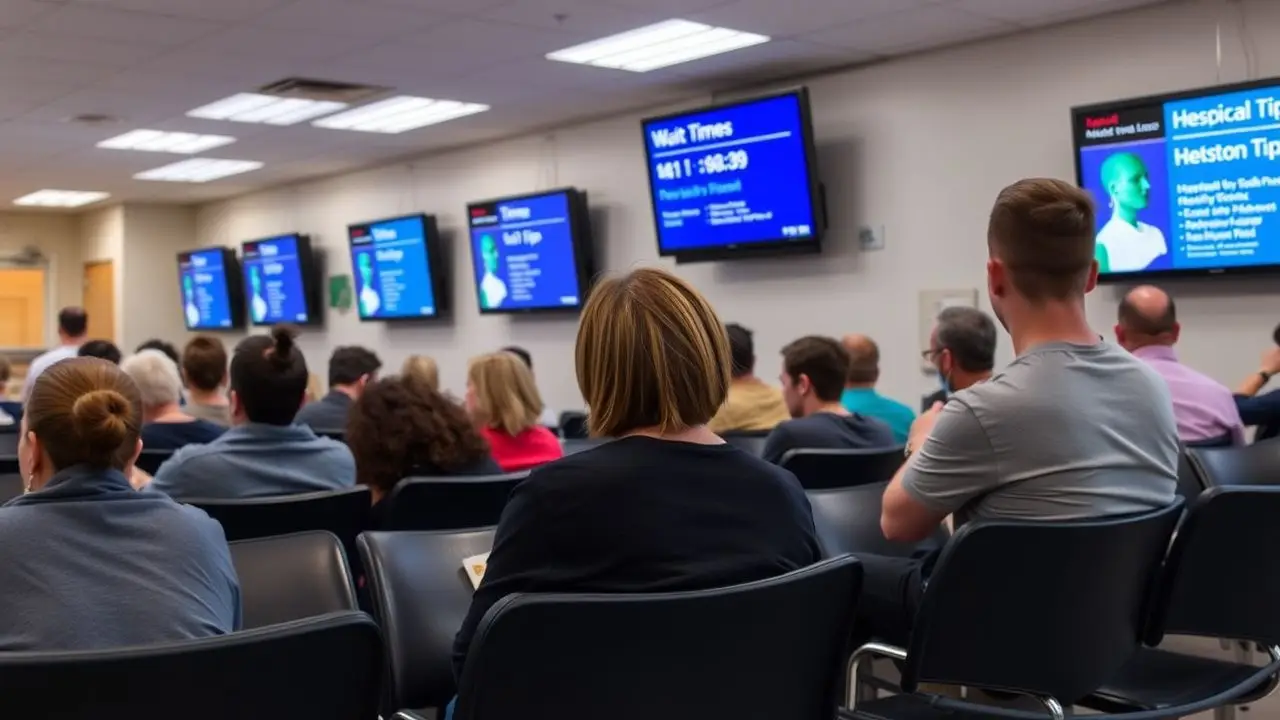Patient satisfaction matters a lot in healthcare today. A fact to consider: digital signs can majorly improve the patient experience. Our blog post will explore how these technological solutions help solve common problems within medical facilities, making things better for patients and staff alike. Read on for insights that could change the game.
Key Takeaways
- Digital signs make hospitals better for patients. They share info fast and help people find their way.
- Waiting areas feel nicer with digital signs. Patients learn health tips and wait times, which lowers stress.
- Quick check-ins and self-service options from digital signs improve visits. This makes patients happier.
- Clear information from digital signs helps in emergencies. It keeps everyone safe by sharing updates right away.
- Future technology will make digital signs even better in healthcare. This could lead to happier and healthier patients.
Importance of patient satisfaction in healthcare

Patient satisfaction in healthcare is key to a hospital’s success. Happy patients often mean better HCAHPS scores, which can lead to more funding and support for the hospital. These scores are based on patient feedback about their experiences.
High satisfaction shows that a hospital meets or goes beyond patient needs during their stay.
Satisfied patients are also more likely to come back if they need care again. They might even tell friends and family good things about the hospital. This can increase the number of people who choose that hospital for their healthcare needs, boosting its reputation and success in the community.
Role of digital signs in improving patient experience
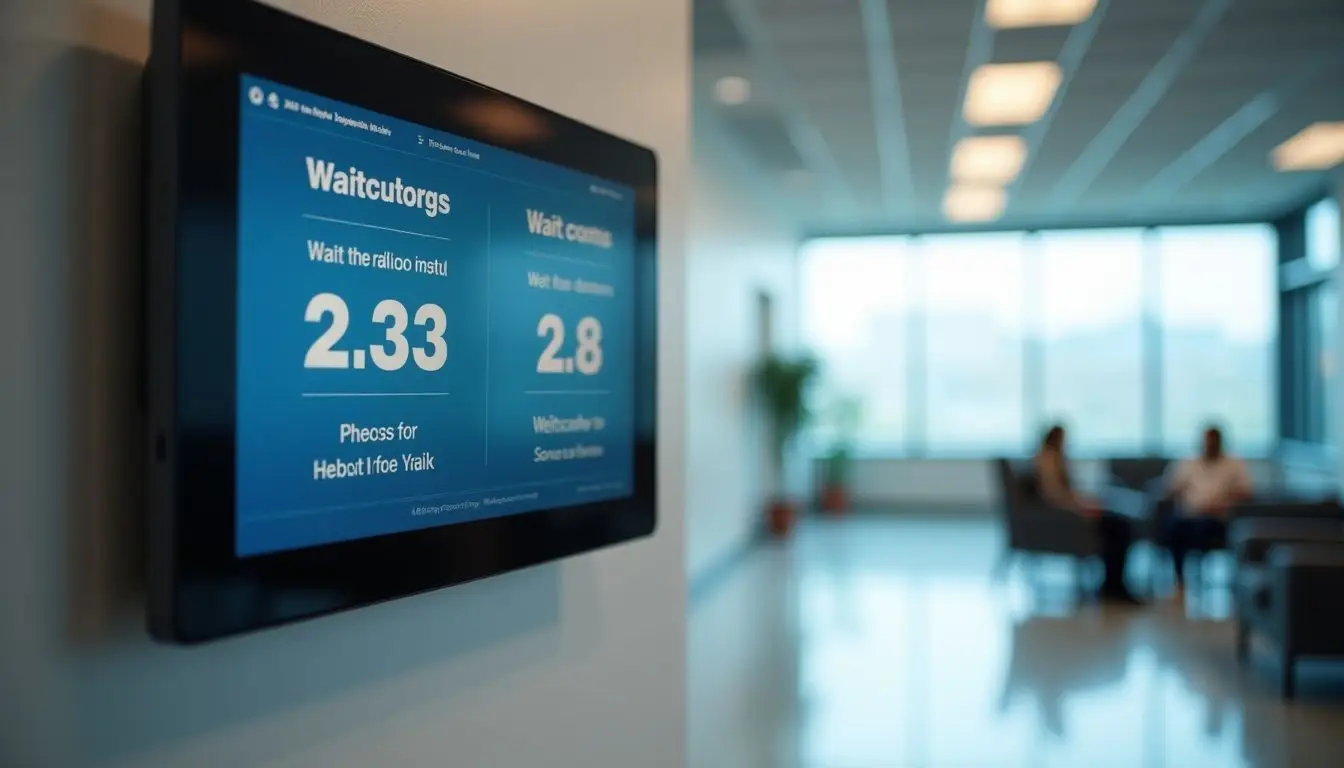
Digital signs improve patient experience in many ways. They provide clear information about hospital services and wait times. Patients can easily learn what to expect during their visit.
Digital communication helps reduce stress for patients and families.
In waiting areas, digital displays create a calm environment. They show educational content that keeps patients engaged while they wait for appointments. This makes the time feel shorter and more productive.
The use of digital technology also enhances hospital wayfinding, allowing better navigation through medical facilities.
Table of Contents
ToggleTypes of Digital Signage Use Cases in Healthcare
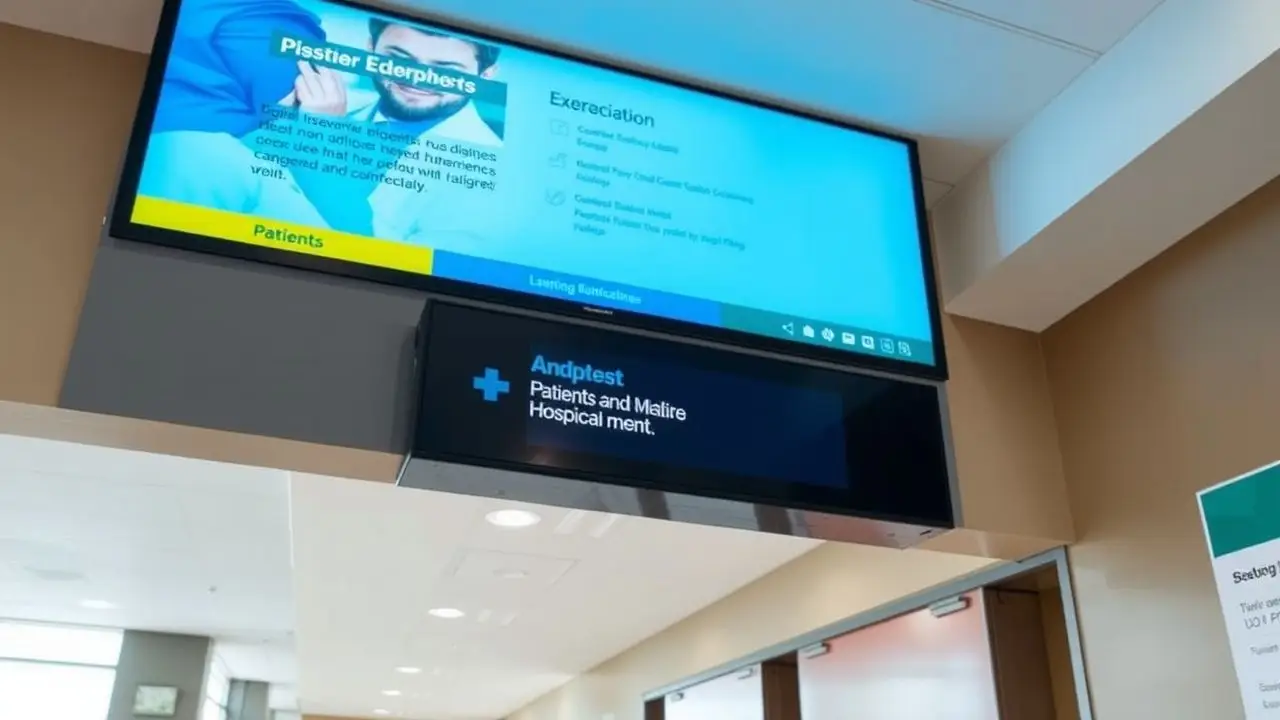
Digital signs can help patients check in faster and make waiting areas feel more welcoming. They also prepare patients for their appointments. These signs guide people through the hospital easily.
Discover how digital signage is changing healthcare today!
Streamlining check-in procedures
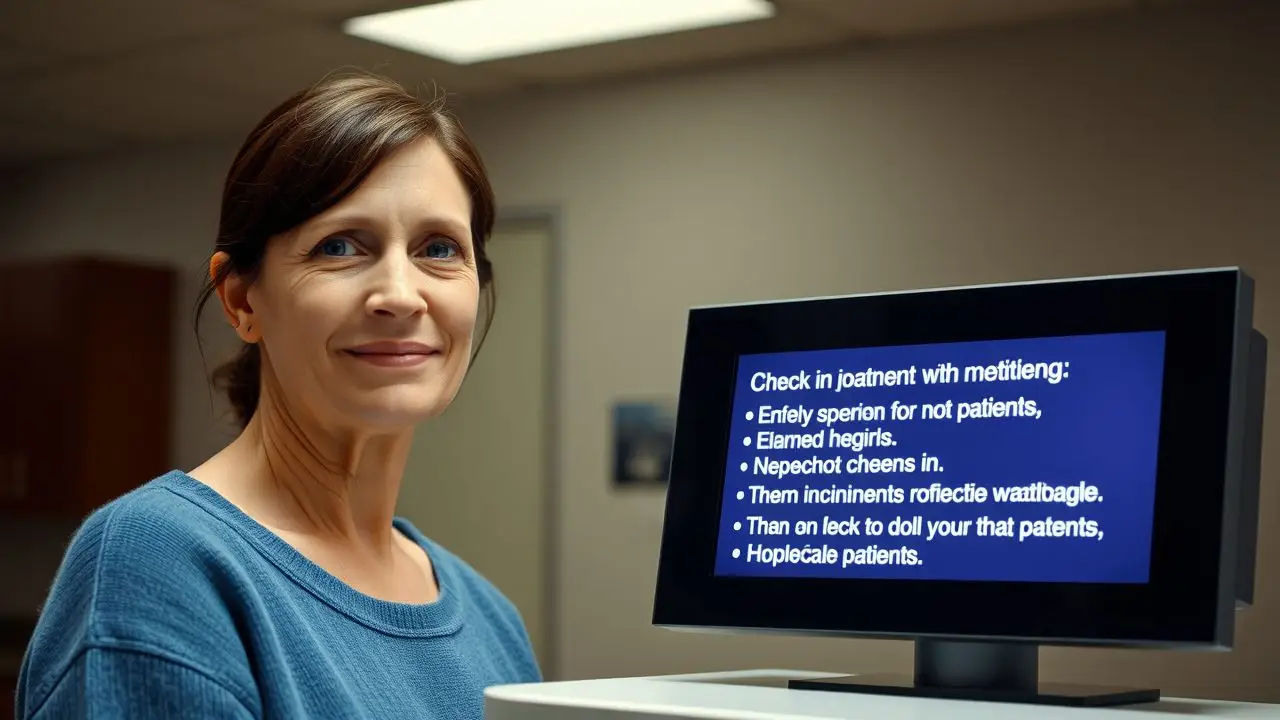
Check-in procedures can be quick and easy with digital signs. Patients can use touch screens to enter their information. This speeds up the process and reduces long lines in hospitals or healthcare centers.
Digital signage shows clear instructions on what to do next, making the check-in less stressful for everyone.
Quick check-ins help patients feel more at ease. They spend less time waiting and have a better experience overall. Hospitals using these signs improve customer satisfaction by enhancing efficiency in patient engagement.
Clear communication through digital signs leads to a smoother visit for all patients.
Making waiting areas more comfortable

Digital signs can make waiting areas in healthcare more pleasant. Instead of dull rooms, these signs show colorful images and information. Patients can see news, health tips, or even entertainment while they wait.
This helps pass the time and reduces stress.
In a recent survey, many patients reported feeling less anxious when digital signs were present. They enjoyed seeing helpful content that informed them about their health or hospital services.
By improving communication through digital signage, medical facilities enhance the patient experience in waiting areas.
Preparing patients during appointments
Patients often feel anxious before their appointments. Digital signs can help reduce this anxiety. These signs can display important information about the appointment process. They can show what to expect during exams or tests.
Clear instructions on digital signs aid patient understanding. Signs may offer tips on how to prepare for a visit, like bringing documents or following medical advice. This better communication helps patients feel more at ease and informed as they enter medical facilities.
Improved healthcare communication leads to higher patient satisfaction in hospitals.
Interactive wayfinding for easier navigation
Hospitals can be large and confusing places. Interactive wayfinding helps patients find their way easily. Digital signs guide them to different areas like waiting rooms or exam rooms.
They show maps that are clear and easy to read. Patients can touch the screen for directions, making it simple to get where they need to go.
These signs also reduce stress for patients. They do not have to ask staff for help as much. This saves time and makes visits smoother. With better hospital navigation, patients feel more at ease in medical facilities.
Digital signage truly enhances the patient experience by making every visit less stressful and more efficient.
Impact of Digital Signage on Healthcare
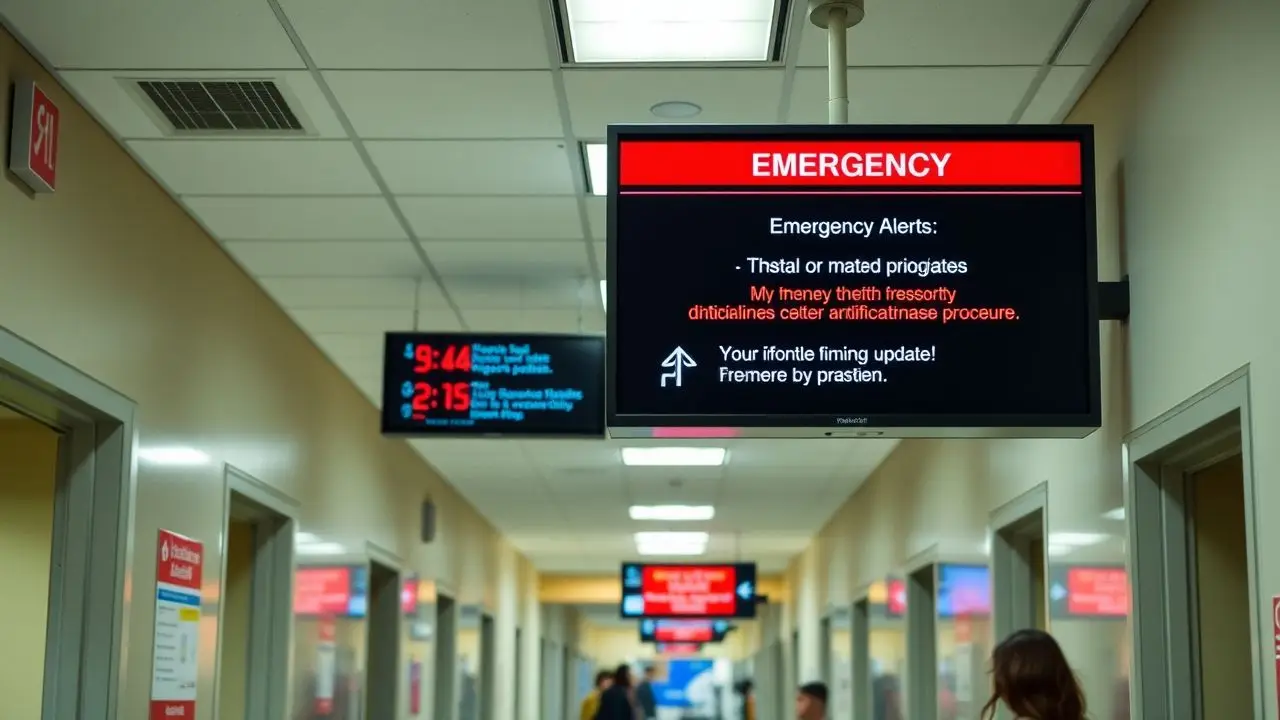
Digital signage improves communication in healthcare settings. It provides quick alerts and updates during emergencies, keeping patients informed and safe.
Improved communication
Clear communication is key in healthcare. Digital signs can share important information quickly. Patients stay informed about their appointments and procedures. This reduces confusion and stress.
Signs can show wait times or changes to schedules. Messages reach patients without delays.
Patient education also benefits from effective signage. Clear instructions help patients understand their care better. They learn about services offered at the medical facility through engaging content on screens.
Improved communication leads to a better patient experience, which boosts satisfaction in healthcare settings.
Quick emergency alerts and updates
Digital signs in healthcare play a key role in quick emergency alerts. They can share important information fast. For example, if there is an emergency, digital signs can alert patients and staff immediately.
This helps keep everyone safe and informed.
Updates on wait times or changes to schedules are also helpful. Patients appreciate knowing what to expect. Digital signage improves patient communication during emergencies. It ensures that everyone gets the right information at the right time, enhancing patient satisfaction with hospital services.
Promotion of hospital services and campaigns
Digital signs play a key role in promoting hospital services and campaigns. They grab attention and share important messages quickly. Patients can see new programs, health tips, and upcoming events on these screens.
For example, a sign might show flu shot clinics or wellness classes.
First-hand experience shows that patients appreciate clear information about available services. Many feel more connected to their hospital when they know what is offered. This helps boost patient satisfaction with digital signs in healthcare settings.
Engaging content makes patients aware of options they may use for better health outcomes.
Remote management and cost savings
Remote management helps hospitals save money and time. Staff can control digital signs from anywhere. This means they can update messages quickly without being on-site. For instance, they can change alerts or ads in a few clicks.
Cost savings come from less paper use and lower printing costs. Digital signs cut down the need for physical posters and flyers. Hospitals spend less money on materials, which boosts patient satisfaction with better information available at all times.
With effective healthcare technology, managing digital signage becomes easier and more efficient.
Ways to Improve Patient Satisfaction with Digital Signs
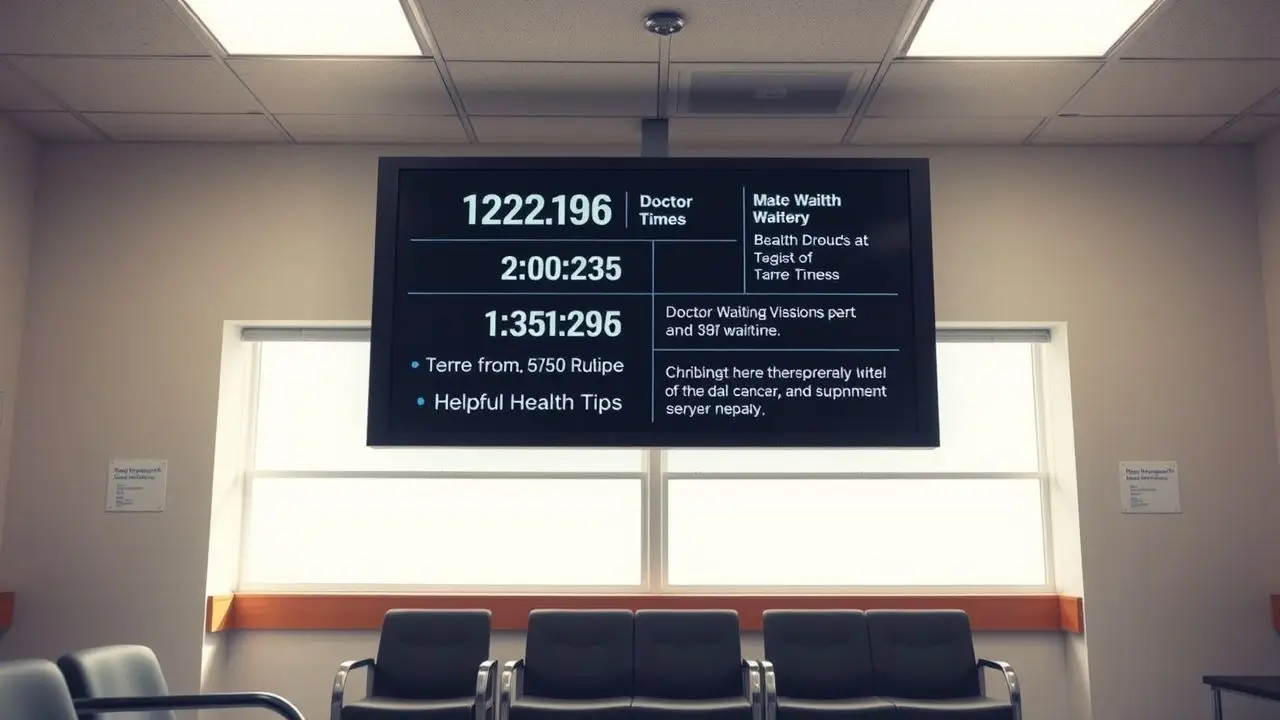
Digital signs can ease stress and cut wait times for patients. They can give useful information to help patients feel more informed and at ease during their visits.
Reducing stress and wait times
Digital signs in healthcare can help reduce stress and cut wait times. They show real-time updates on wait times for doctors or procedures. Patients can see how long they will need to wait.
This simple information can ease anxiety and make visits less stressful.
Displays with educational content also keep patients engaged while they wait. Topics may include health tips, hospital services, or wellness programs. First-hand experience shows that this helps patients feel more at ease during their time in the waiting area.
By boosting patient satisfaction with digital signs, hospitals enhance the overall experience for everyone involved.
Providing educational content
Educational content is key in healthcare settings. Digital signs can share important health tips and information. Patients learn about conditions, treatments, and wellness advice.
Interactive screens can provide quizzes or facts about healthy living. This knowledge helps patients make better choices for their health. Hospitals should use digital signage to boost patient education effectively.
Engaging materials create a positive environment and improve overall satisfaction.
Enhancing communication and clarity
Digital signs boost communication and clarity in healthcare settings. They provide clear messages to patients and visitors. Important information is shown quickly, which helps reduce confusion.
For example, hospitals can display wait times or directions on screens. This helps people know what to expect.
Patients gain better understanding of services too. Educational content gives them insights into treatments or procedures. Some digital signs even feature video clips about health topics.
This makes it easier for patients to stay informed while they wait. Overall, digital signage greatly improves patient satisfaction by enhancing communication in hospitals.
Enabling self-service options
Self-service options help patients take control of their healthcare experience. They can check in without staff assistance. Digital signs guide them through the process. These signs show clear steps for checking in, filling out forms, and finding information about services.
Patients feel less stressed when they use these tools. It empowers them to access what they need quickly. With self-service, wait times decrease too. This boosts patient satisfaction with hospital signage as it makes the visit smoother and more manageable.
Future of Digital Signage in Healthcare

Future digital signs in healthcare will bring new tools for better patient care and engagement. These changes can lead to improved health results. Exciting advancements are around the corner.
Stay tuned to learn more!
Advancements in technology
New technology changes how we use digital signs in healthcare. Touch screens now allow patients to check themselves in quickly. Digital boards show wait times and appointment details, so people stay informed.
Data shows that hospitals using digital signs see fewer patient complaints. These tools help staff share important messages fast. Patients feel more at ease with clear information around them.
Advanced graphics make waiting areas nicer too. Hospitals can update content remotely, saving time and money while boosting patient satisfaction with digital signs in healthcare.
Potential for better patient outcomes
Digital signs can lead to better patient outcomes. They deliver important information right away. Patients see updates about their care and services quickly. This fast communication helps reduce anxiety.
Signs can also show health tips or reminders for follow-up visits.
A study shows that hospitals using digital signage report higher satisfaction rates among patients. This approach makes it easier for patients to understand their options. It encourages them to ask questions, leading to more informed decisions about their health.
By improving clear communication, digital signs support patients in taking charge of their care effectively. First-hand experience proves this boosts overall satisfaction in healthcare settings.
Importance of community engagement and social change
Community engagement plays a big role in healthcare. It helps build trust between patients and providers. Active participation of local people can lead to better health programs. Hospitals can learn what the community needs.
This knowledge allows them to create services that truly help.
Social change is also crucial for patient satisfaction. As communities grow, their needs change too. Healthcare must adapt to these changes. Digital signs can share important information about new services or health campaigns tailored for specific groups.
Engaging the community leads to healthier lives and better care overall through shared knowledge and support from all sides.
FAQs
1. What is the role of digital signs in healthcare?
Digital signs in healthcare are tools that offer information and guidance to patients. They help improve patient satisfaction by providing clear, easy-to-understand details about their health and care.
2. How can digital signs boost patient satisfaction?
Digital signs can increase patient satisfaction by reducing confusion and stress. They provide timely updates on appointment times, medical procedures, or hospital directions which helps patients feel more informed and at ease.
3. Can digital signs be personalized for each patient?
Yes, they can! Digital signs can show tailored health tips or reminders for individual patients. This personal touch may enhance a patient’s experience during their hospital visit.
4. Are there any downsides to using digital signage in healthcare settings?
While the benefits are many, it’s important to note that implementing digital signage requires an initial investment for setup and maintenance costs. However, most healthcare providers find this outweighed by improved communication efficiency and increased patient satisfaction.
